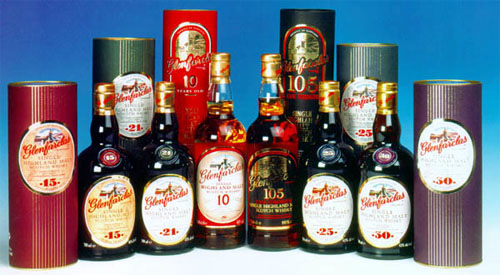 “We love to laugh and have a sing song, such a happy crowd are we, we’re all pals together, the minors of the ABC.”
“We love to laugh and have a sing song, such a happy crowd are we, we’re all pals together, the minors of the ABC.”
This was the happy song emanating from cinemas around the UK on Saturday mornings in the late 60s and early 70s as three hours was dedicated to kids’ entertainment. There was some live entertainment and also a few cartoons but there was always the “big film” and the one that has stuck in my mind for many years is 1969’s Krakatoa, East of Java. There were a great many children who didn’t sleep after seeing Hollywood’s rendition of the 1883 phenomenon that remains the biggest volcanic eruption in modern history.
What brought this to mind was my research into the location of Glenfarclas distillery in Speyside. Looking at it on the map, I thought that ‘West of Dufftown’ was adequate for the purpose but the description brought to mind a wee fact that came to light in response to the success of the film; Krakatoa was actually west of Java. Apparently the film company realized their error during pre-release publicity but decided that the exoticism of the East outweighed the need for geographical accuracy.
Some eighteen years prior to the big bang (not something that the physicists at the Large Hadron Collider will ever say) John Grant purchased the Glenfarclas distillery for the sum of five hundred and eleven pounds and nineteen shillings. An interesting task would be to research what rule of the Exchequer dictated that the extra shilling would be too much to pay but, whatever dictates applied, this transaction is a fine example of why we Scots have a business reputation for being astute to the point of theft. A single bottle of their superb 2005 bottling, or “expression” as Glenfarclas call it, “50 year old” would, for example, fetch nearly twelve distilleries at present day prices. Indeed, the distillery has remained a family-run business ever since and the Grants have recently admitted to the taxman that they have recovered their initial investment although they remain cautious about actually declaring a profit.
Speyside malts are rightly famous and with water gathered on the slopes of Ben Rinnes’ 2,700 ft peak and filtered by heather, granite and peat before springing back to the surface, Glenfarclas is a distinctive example of the great whiskies that emanate from the north East of Scotland. These Speyside malts are as distinct from their western cousins as caramel is from butterscotch in that they are evocative of that fine Scottish description, “the same but different”. One knows that the same essential ingredients are used but the final product, with only a small amount of finishing, would defy this knowledge. The underlying peat taste remains but it is in no way dominant and the saltiness of the Islay or Campbelltown malts is
entirely absent. There are a large number of expressions but two that I have sampled are the 12-year-old and the glorious 30-year- old. The former is aged in sherry casks and this combined with the spring water has produced a delight that is a fine introduction to the freshness, slight smokiness and lingering sweetness that is both typical of and delighting about many Speyside malts. However, it is when one encounters the 30-year-old that one appreciates the glorious heritage that remains in the hands of the Grant family. This dark golden malt is so rich, spicy and sweet of flavour that it has been compared to distilled Christmas cake. Indeed, the finish is of such length that Easter might speed by before it completely leaves the palate. Truly deserving of the awards that it has won all over the world, this bottling should be sampled wherever it is, all too rarely, found. I would be delighted to describe the taste of the celebratory 50-year-old that was bottled in 2005 to celebrate the bicentenary of the birth of John Grant, but the only two bottles that I know the whereabouts of (there were only one hundred and ten produced) belong to a particularly curmudgeonly associate of mine. His consistent reaction to my oft-made suggestion that we should “share a drop” is reminiscent of Saint Peter’s rush to breakfast after leaving Gethsemane, and I hold no great hope of this changing. If, however, Paul of Tarsus was heading east on the A95, I believe that he might truly experience another conversion as he encountered the “Miracle on the road to Dufftown” that is Glenfarclas. Although, unlike the ABC minors, it would be with a snifter rather than a bang.- J.B.
For more information please write to whisky@hkgolfer.com
Click here to see the published article.






